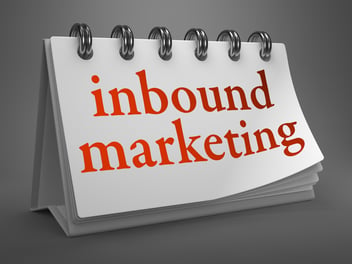There has been a shift of power in the buying process for a time now. We know this because decades ago, buyers were overly dependent on the seller for information. Why? Because the sellers possessed all the power, especially if they had the monopoly of their industry. The seller holds the answers to questions like: “What are the features of your product?”, “how much does it cost?”, “who else is using it?”, and “do they like it?”.
Of course, the buyers always have a need for certain commodities, and it is a natural human inclination to always want the best product there is. And with sellers holding all the pieces of information, buyers have to rely on what information they choose to divulge. The Latin maxim “caveat emptor” which literally translates to “let the buyer beware” rarely holds place in the entire sales process as buyers don’t always have access to product information and therefore cannot weigh the pros and cons of the purchase on their own. They will always need the input of the seller, who, obviously, will just build up the product before the buyer and retain flaws of the products, if there is any.
Such is the usual scenario, until the advent of the internet and various other helpful technology which gave man the opportunity to access whatever information they need just at the tip of their fingers (provided they have Wi-Fi, of course *wink).
The manner of selling has altered over the past years. At present, there is little to no room for the old, pushy, rush-to-the-closing type of selling that salespeople have been known for before.
Today, Inbound Sales as an approach to merchandising has infiltrated markets and charmed consumers in all sorts of industry.
So what is this Inbound Sales Process, and with plenty of other tried and tested approaches to sales, why implement an inbound sales process?
We’re going to take that piece by piece in the next few paragraphs! Continue.
What is Inbound Sales?
Inbound Sales is a customer-centric way of selling that is done through attracting leads by creating and sharing valuable, informative, and helpful content; and framing an offer around the individual buyer’s needs.
It would be worth noting that Inbound Sales is about the customer first, and the right timing next. Why the right timing? Because unlike the traditional sales approach, inbound sales does away with the pushy and obnoxious way of selling that nowadays would repel customers instead of enticing them to buy.
With the Inbound Methodology being its core, Inbound Sales is a personalized, helpful, and modern sales methodology where salespeople don’t rush to close deals but rather, focus on their prospect’s challenges, earn their trust by acting as a reliable source, and then pattern their entire sales process to wherever the prospect is in their buyer’s journey.
So how exactly is inbound sales done? What does an Inbound Sales Process look like?
How It’s Done
During an inbound sales process, the buyers go through three phases, namely: Awareness, Consideration, and then Decision.
Within the Awareness Phase, buyers conduct their research through the social media pages and websites they visit as they attempt to identify and learn more about a particular challenge or pain-point in their daily lives. This is also when they try to look for a possible solution to the said problem/s. After that, they proceed to the Consideration Phase where, after knowing and understanding a problem they have, they now discern the best possible solution. The last phase is the Decision Phase, and here, you can expect that buyers have already weighed all pros and cons and have chosen the solution that is suitable for their circumstance.
Those are the phases that buyers go through. Meanwhile, as the entire inbound sales process takes place, the sales team goes through four different actions to guide the buyer- then a mere prospect-into becoming a lead and eventually, a customer.
These series of actions are called the four inbound sales actions.
First is IDENTIFY. This is when the sales team employs ways and strategies to identify leads, distinguish active from passive buyers and then determine which leads must go into the funnel.
Next is CONNECT. This is when you reach out to leads. To do this well, you must fortify your research about your leads and personalize your approach depending on what you understand to be their preference. This is when you help leads decide whether to prioritize finding a solution to a problem they’re facing, or not. This is a crucial point because should the lead choose to pursue the search for a solution, they then become qualified leads.
Third is EXPLORE. Here, inbound sales people endeavor to learn and understand better the goals and challenges faced by their leads and ascertain if they’re a good fit. It would also help the sales team to find out what other solutions their lead is considering so they may throw in details to set their product apart from the competition.
Last is ADVISE. This is where you tell the lead that the product you sell is “uniquely positioned” and is the solution they have been searching for to address their particular pain-point.
Through the stages buyers go through, and the series of actions that the sales people go through in order to assist them in their search for a solution to their unique problems, emerge what we call an Inbound Sales Process.
Final take: Why Implement an Inbound Sales Process?
As you have learned by far, the Inbound Sales Process is not pushy, it isn’t obnoxious, and it meets people exactly where they are at in their buyer’s journey.
The inbound sales process, essentially, is a manner of selling without resorting to the annoying antics that the traditional sales process is known for. And with the kind of consumers who live today, the inbound sales process is the only process that can allow you to sell without being asked to shut up. Funny as that may sound, it’s true– you implement an inbound sales process so that you can sell, in a manner that you can get people to even listen.
That should be answer enough, to anyone who dares ask “why implement an inbound sales process?”

 What is the Inbound Sales Process?" loading="lazy">
What is the Inbound Sales Process?" loading="lazy">


